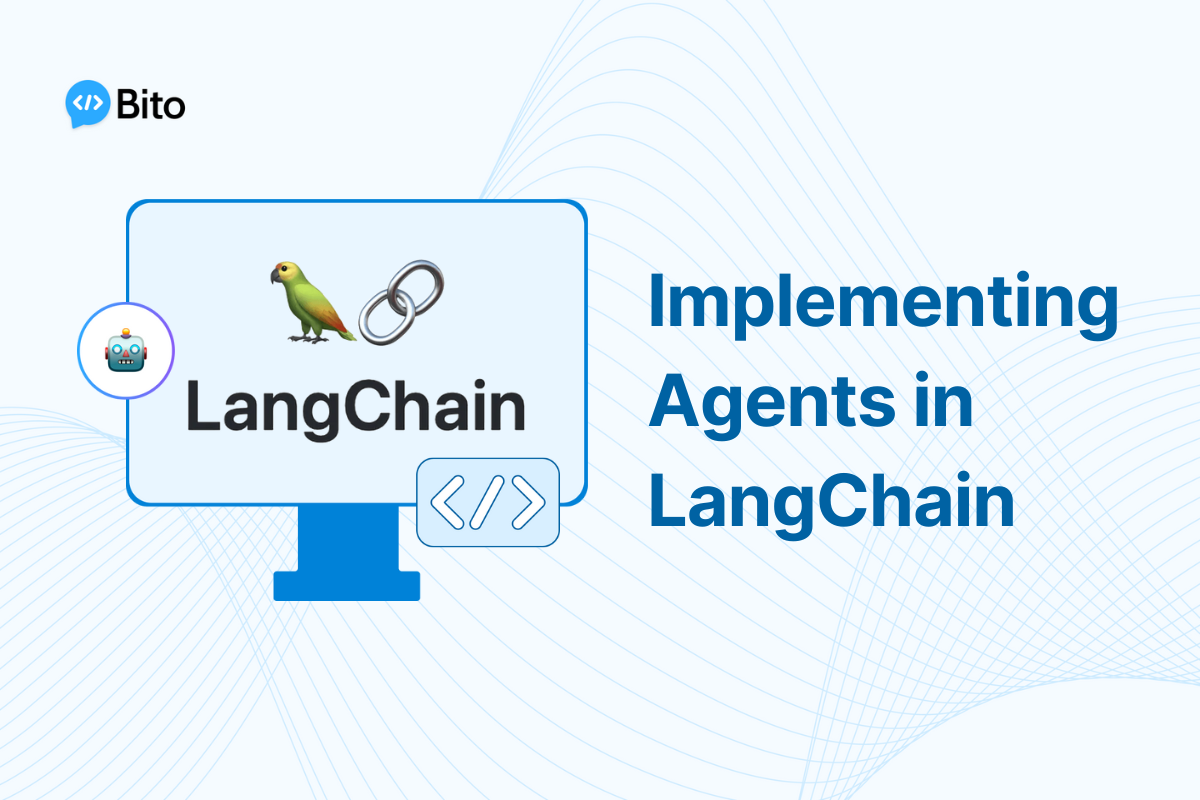Large language models (LLMs) like GPT-4, Claude, and others have demonstrated impressive natural language capabilities, being able to understand and generate human-like text. However, directly tapping into an LLM’s raw text generation abilities often falls short when trying to accomplish complex real-world tasks.
LangChain provides an open-source Python framework for creating intelligent “agents” that can take reasoned actions and leverage external tools and information to accomplish multifaceted goals. In this article, we’ll explore the key concepts and steps for implementing useful agents with LangChain.
Introduction to LangChain
LangChain is an open-source Python library designed to make it easier for developers to build applications using large language models. It was created by Anthropic, a company founded by Dario Amodei and Daniela Amodei that focuses on AI safety research and responsible AI applications.
The key innovation provided by LangChain is the concept of “agents”. LangChain agents are systems that use an LLM to choose a sequence of actions to take. The actions can include calling API functions, running commands, querying databases, and more. By chaining together sequences of reasoned actions, LangChain agents can solve problems and accomplish goals that would be beyond the capabilities of a standalone, stateless LLM.
Some examples of tasks that can be handled by LangChain agents include:
- Answering questions by searching the internet or databases
- Making reservations by interacting with appointment booking APIs
- Placing orders by integrating with e-commerce platforms
- Automating customer service workflows by sending emails or texts
The agent-based approach helps overcome limitations like a lack of external world knowledge and an inability to carry state that exist when purely prompting a large language model. Let’s explore how to create LangChain agents.
Loading Tools for the Agent
The first key step in implementing a LangChain agent is providing it access to tools it can leverage to take useful actions. These tools can be thought of as functions the agent can call to perform tasks like searches, calculations, summaries, and more.
There are two important considerations when selecting tools for your agent:
- Carefully select tools the agent will need to accomplish its intended goals. For example, an agent that answers questions about businesses should have access to tools that enable internet searches, while a math homework solving agent needs access to tools that can make calculations. Choose tools to match the agent’s purpose.
- Write tool descriptions the LLM will understand. Agents choose which tools to leverage based on your natural language prompts. Concisely explain what each tool does in terms the LLM can parse.
Here is some sample code loading a web search tool and a calculation tool for use by an agent:
from langchain.tools import Tool
from langchain.agents import load_tools
search = Tool(
name="WebSearch",
func=search_function,
description="Searches the internet and returns relevant results on any topic"
)
calculator = Tool(
name="Calculator",
func=calculator_function,
description="Performs mathematical calculations including arithmetic, algebra, and more"
)
tools = load_tools(search, calculator)
Providing the right set of tools gives the agent capabilities it can bring to bear on problems. Next we’ll look at initializing the full agent.
Initializing a LangChain Agent
Once tools are prepared, the next step is initializing a full LangChain agent that can utilize them. Here are the key steps for constructing an agent:
- Choose an underlying LLM – Pick a large language model like GPT-4, Claude, or others as the reasoning engine.
- Select an agent architecture – LangChain provides some pre-built agent architectures like the Zero-shot React agent. Pick one suitable for your use case.
- Initialize the agent – Create the agent by passing the tools, LLM, and any other components like memory to the initializer.
This initializes an agent that combines the natural language capabilities of the LLM with the capabilities provided by the tools you’ve enabled. For example:
from langchain import OpenAI, Claude
from langchain.agents import initialize_agent, AgentExecutor
llm = OpenAI(temperature=0)
# Initialize a Zero-shot React agent
agent = initialize_agent(tools, llm, agent_type="zero-shot-react")
# Initialize an AgentExecutor to interact with the agent
executor = AgentExecutor(agent)
Now we have an agent bootstrapped and ready to take actions guided by the LLM’s natural language understanding!
Interacting with the Agent in Natural Language
Once initialized, users can interact with the LangChain agent by simply sending it natural language prompts and receiving natural language responses.
For example, to leverage the web search and calculation tools enabled above, you could provide the following prompt:
“User: What is the population of Los Angeles divided by the number of Lakers championships?”
The agent would then parse this, determine the steps required to answer it using the available tools, and execute the following workflow:
- Use web search tool to lookup population of Los Angeles (returns result: 3,971,000)
- Use calculator tool to divide 3,971,000 by 17 (number of Lakers championships)
- Return result: 233,941
Without hardcoding these workflows, LangChain agents can dynamically determine how to break down and solve complex problems simply based on natural language prompts. Users without coding experience can leverage these agents for a wide variety of applications.
Customizing and Improving LangChain Agents
LangChain provides several ways developers can customize and optimize agents to achieve the desired behavior:
Adjusting Prompts and Tools
- Fine-tune prompts – The prompts and instructions you provide heavily influence agent behavior. Iteratively tweak prompts to align with intended reasoning processes.
- Add/remove tools – Expand agent capabilities by providing new tools, or restrict by removing unnecessary ones.
- Analyze with LangSmith – LangSmith can show step-by-step reasoning to validate prompts lead to proper tool use.
Using Advanced Architectures
- Hierarchical agents – Break down complex goals into specialized sub-agents focused on sub-tasks.
- Retrieval agents – Incorporate external knowledge by retrieving relevant context.
- Theory of mind agents – Equip agents with models of user beliefs/knowledge.
Training Reinforcement Learning Agents
- Define environment, actions, and rewards.
- Use frameworks like Agent Gym and Stable Baselines3 to train with reinforcement learning.
- Produce agents that can improve through practice on tasks.
By leveraging areas like prompt engineering, knowledge retrieval, and reinforcement learning, LangChain agents can be customized and optimized for reliably accomplishing goals.
Conclusion
LangChain provides an intuitive framework for creating intelligent agents powered by large language models. By combining language understanding, modular tools, and customizable architectures, LangChain agents can solve multifaceted real-world problems.
Key strengths of LangChain agents include:
- Natural language interaction – Users can prompt agents with plain language.
- Modular capabilities – Agents integrate diverse tools and APIs.
- Dynamic adaptation – Agents determine context-specific workflows.
- Customizability – Prompts, tools, and architectures can be tuned.
As research in areas like prompt engineering and reinforcement learning for agents continues, capabilities will rapidly improve. LangChain provides a robust platform to push agents forward to solve impactful problems. The agent-based approach unlocks the real-world potential of large language models.






